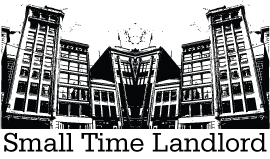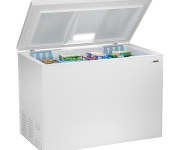Tenants: Utility Bill Cost Cutting
This past summer, electricity was a hot topic (cough) throughout New York’s Queens Borough. Eleven day power outages brought on by the failures of 10 of the 22 primary feeders that provide power to the borough network failed. On top of that, ConEd customers have been subjected to the second highest electric rates in the country (source). Couple this kind of overhead with the rental costs of NYC and tenants aren’t likely to be happy near the end of the month.
There are however, a few ways for tenants to reduce some of their utility expenses.
- Utilize programmable thermostats (if installed): Currently RiteTemp’s model 8050c Thermostat is installed for each units gas furnace and it is working perfectly. For those tenants that still find programming their DVD/VCR difficult, the Ritetemp thermostat comes with a preprogrammed Energy-Star approved schedule. For those wanting to customize the schedule, the operating guide can be found here: RiteTemp 8050 Operation Guide.
- Compact Flourescent Lighting: Earlier on I mentioned the Home Depot Contractor pack of 60 watt equivalent compact fluorescent (CFL) bulbs (these packs have since been discontinued).  If you are looking for detailed information on CFLs, Don Klipstein’s Compact Fluorescent page is the place to go for it. One of the things I started to look for was the kelvin temperature of the light these bulbs emit. If looking for a soft yellow light look for bulbs with a color temperature of 2700k, as the temperature rating gets higher, the more clinical white the light emitted looks.
- Power outlet vs. Power strip: Plugging your TV and VCR/DVD into a power strip rather than an outlet will save you about 2 percent on your annual electricity bill. Even when you turn these appliances off, they continuously leak up to 15 watts of electricity if they’re plugged into an outlet. When plugged into a power strip, however, these appliances leak only about one to three watts.
- Reconsider using the range or oven for heating food. While the extra heat from an oven can be welcome in the winter, a microwave uses only a fraction of the energy required by a full sized oven. If cooking using the range, use a pan that’s sized to the burner or element for more effective heating (small element + big pan = wasted fuel).
- Crock-Pots use much less energy to slow cook food than simmering on a stove.
- Clean the coils on the refrigerator using a tapered appliance brush. The compressor/motor won’t have to run as long or as often – thus saving on energy and device wear & tear.
Looking for more information?

Consumer Reports has published The Complete Guide to Reducing Energy Costs (Consumer Reports: You Need to Know).
National Geographic: Is your home a “green” house?
Tree Hugger : Greening your dormroom
Energy Consumption by Household Appliances « Saving Energy
Technorati Tags:
Energy | Education | Utilities |
Apartment | Landlord | Small Time Landlord
Thanks to the Xebec Data Corp. for the link






Not to plug them too much, but cast iron pots and pans by Le Creuset are pretty energy efficient – they actually retain the heat (unlike thin metal pots and pans, which comprise a large percentage of the market). You use less flame for the same amount of time and have longer heating. Nice!
😀